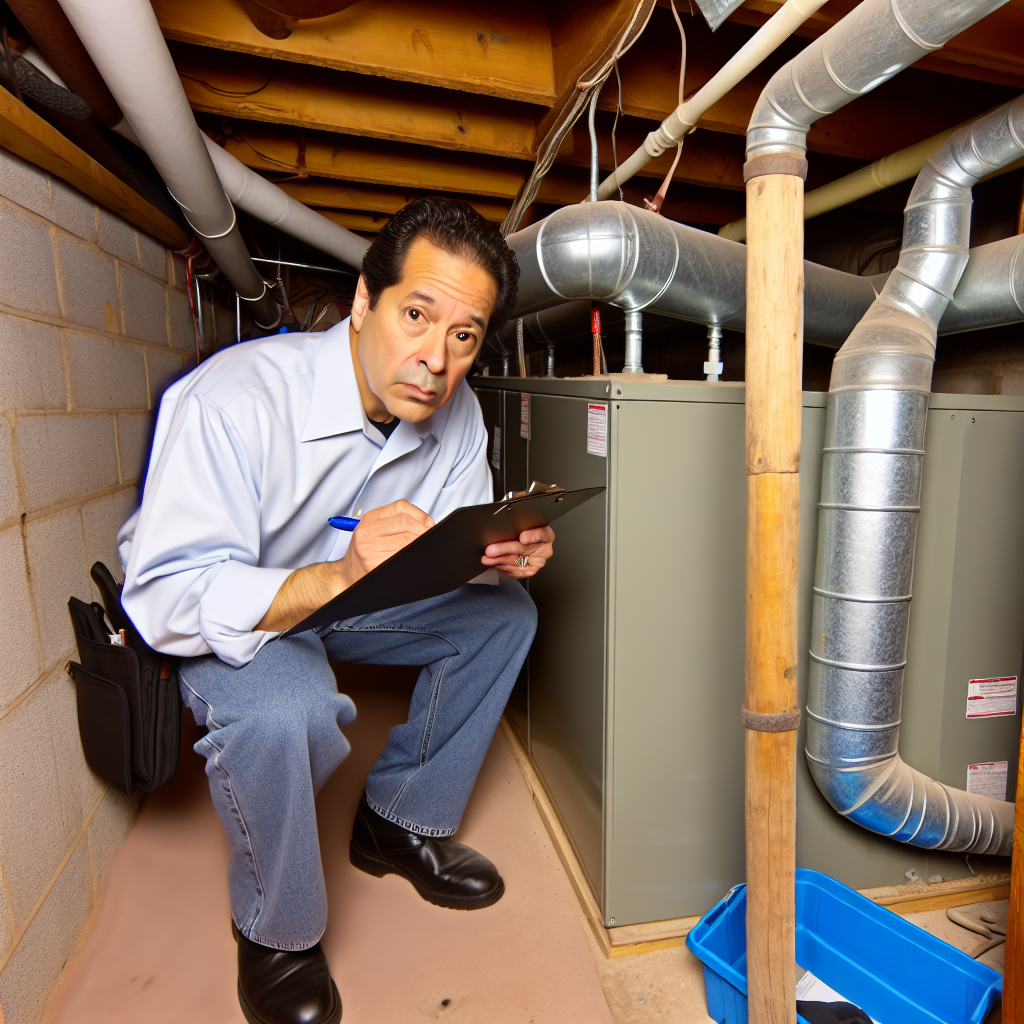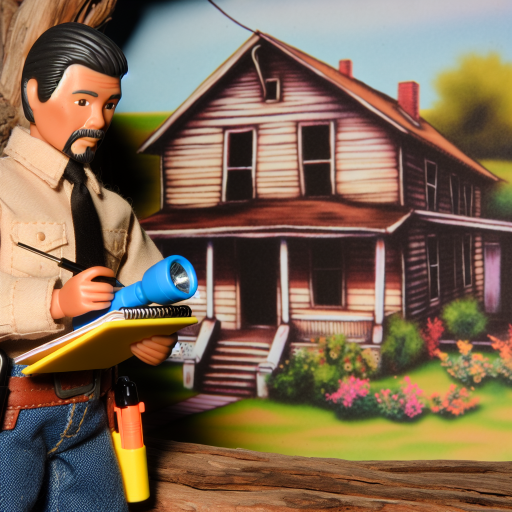Introduction to HVAC Systems and Their Importance in Home Inspections
HVAC systems are essential for maintaining a comfortable living environment.
They encompass heating, ventilation, and air conditioning components.
Properly functioning HVAC systems regulate indoor temperatures efficiently.
They also ensure optimal air quality throughout your home.
During home inspections, HVAC systems require thorough evaluation.
Potential buyers must understand the condition of these systems.
Inspecting HVAC systems helps avoid costly repairs in the future.
Furthermore, a reliable HVAC system contributes to energy efficiency.
Homeowners appreciate the benefits of a sound HVAC system.
In summary, HVAC systems play a crucial role in home inspections.
Effective evaluations enhance overall property value and livability.
Overall HVAC System Overview
Types of HVAC Systems
Various types of HVAC systems serve different needs.
Forced air systems are the most common type.
They utilize ducts to distribute conditioned air.
Another type includes radiant heating systems.
These systems heat rooms through warm surfaces.
Geothermal HVAC systems leverage the earth’s temperature.
Additionally, split systems combine indoor and outdoor units.
Functions of HVAC Systems
HVAC systems regulate indoor temperatures effectively.
They also control humidity levels within homes.
Air filtration is another critical function.
This process improves indoor air quality significantly.
HVAC systems should maintain comfortable environments.
They facilitate proper ventilation, reducing indoor pollutants.
Importance of Regular Maintenance
Regular maintenance keeps HVAC systems running efficiently.
It helps identify potential issues before they escalate.
Scheduling seasonal checks ensures optimal operation.
Additionally, routine maintenance can extend system lifespans.
Homeowners should prioritize annual HVAC inspections.
Checklist for Inspecting Heating Systems: Furnaces and Boilers
General Inspection Procedures
Start by checking for visible signs of wear and tear on the furnace or boiler.
Inspect the area around the unit for ventilation issues.
Ensure there are no flammable materials stored nearby.
Next, check the functionality of the power supply to the system.
Make sure the thermostat is operational by adjusting the temperature settings.
Observe the unit for any unusual noises during operation.
Specific Components to Examine
Inspect the heat exchanger for signs of corrosion or cracks.
Check the blower motor for proper operation and noise levels.
Ensure that the combustion chamber is free of soot and debris.
Examine the air filters and replace them if necessary.
Inspect any ductwork for leaks or blockages.
Safety Features
Verify that the carbon monoxide detectors are functional and tested regularly.
Check for a pressure relief valve and ensure it operates smoothly.
Inspect the main gas line for leaks using a soap solution.
Make sure that the system has a working emergency shut-off switch.
Maintaining Records
Document all inspection findings for future reference.
Keep records of any repairs or maintenance performed on the system.
Note any recommended actions for future inspections.
Ensure that all service professionals leave written reports after work is completed.
Delve into the Subject: Home Inspection Checklist For First-Time Homebuyers In The USA
Checklist for Inspecting Cooling Systems: Central Air Conditioners and Heat Pumps
Visual Inspection
Begin with a thorough visual inspection of the outdoor unit.
Look for any signs of leaks or damage around the unit.
Check for debris or obstructions around the outdoor system.
Examine the insulation on refrigerant lines for wear or damage.
Operational Check
Turn the system on and observe its startup process.
Listen for unusual noises during operation.
Monitor the system for even cooling across all rooms.
Check for unusual smells that may indicate issues.
Temperature Measurement
Use a digital thermometer to measure supply air temperature.
Compare it to the return air temperature.
Calculate the temperature difference to ensure efficiency.
Filter Assessment
Inspect air filters for dirt and debris.
Replace or clean filters as necessary.
Check the filter size and type to ensure compatibility.
Refrigerant Levels
Check refrigerant lines for proper insulation and integrity.
Look for any signs of refrigerant leaks.
Ensure the levels meet manufacturer specifications.
Electrical Components Inspection
Examine electrical connections for any signs of wear or corrosion.
Ensure that disconnect switches are functioning correctly.
Test the capacitor and contactor operations for reliability.
Drainage System Check
Inspect the condensate drain line for clogs.
Ensure that water drains properly and does not back up.
Look for any signs of water damage around the unit.
System Age and Condition
Document the age of the HVAC system for reference.
Aging systems may require more frequent inspections.
Consider the overall condition for future maintenance needs.
You Might Also Like: The Ultimate Guide To Choosing A Realtor For First-Time Homebuyers
Ductwork Inspection
Signs of Damage
Inspect the ductwork for any visible signs of damage.
Look for dents, holes, or rust along the ducts.
These issues can affect the HVAC system’s efficiency.
Pay attention to any disconnected sections of ductwork.
Improper connections can lead to air leaks.
Check for gaps between duct sections that may not be sealed properly.
Additionally, observe for signs of mold or mildew.
These indicate moisture problems in your HVAC system.
Airflow Assessment
Next, assess the airflow throughout your home.
Start by checking the air vents in each room.
Ensure they are open and unblocked by furniture.
Evaluate the air temperature coming from the vents.
Inconsistent temperatures may point to ductwork issues.
Use a handheld anemometer to measure airflow at the vents.
This tool provides accurate readings of airspeed.
Compare the measurements across different rooms.
This comparison helps identify areas needing attention.
Cleaning and Maintenance
Regular cleaning and maintenance keep the ductwork efficient.
Consider hiring a professional to perform a thorough cleaning.
Remove dust and debris that accumulates in the ducts.
Also, check the insulation around the ductwork.
Make sure it is intact and in good condition.
Damaged insulation can lead to energy loss.
Schedule routine inspections to ensure optimal performance.
Learn More: Understanding Property Taxes For First-Time Homebuyers In The USA
Thermostat Functionality
Understanding the Role of Thermostats
Thermostats regulate temperature in your home effectively.
They control the HVAC system based on user settings.
Understanding how to test them is essential for efficiency.
Initial Visual Inspection
Start with a visual inspection of the thermostat.
Check for dust or debris on the surface.
Ensure that there are no loose wires or connections.
Look for signs of wear or corrosion on terminals.
Testing Thermostat Functionality
Begin testing by adjusting the temperature setting.
Set the thermostat higher than the current room temperature.
Listen for the HVAC system to engage.
Note how long it takes for the system to respond.
If it does not engage, further investigation is necessary.
Calibration Procedures
Use a separate thermometer to check room temperature.
Compare it to the thermostat reading for accuracy.
If there’s a significant difference, recalibrate the thermostat.
Refer to the manufacturer’s manual for specific steps.
Testing Different Modes
Test the thermostat in both heating and cooling modes.
Make sure the system runs efficiently in each setting.
Observe for any unusual noises or failures to engage.
Final Checks
After testing, check the thermostat’s battery if applicable.
Replace old batteries to ensure reliable operation.
Finally, review any user settings for correct operation.
Delve into the Subject: Home Inspection Checklist For Examining Windows And Insulation Quality

Drainage and Condensate Systems: Ensuring Moisture Management
Importance of Proper Drainage
Proper drainage is essential for HVAC systems in homes.
It prevents moisture accumulation and potential damage.
Additionally, effective drainage enhances system efficiency.
Homeowners must regularly check drainage components.
Inspecting Drainage Lines
Begin your inspection by examining the drainage lines.
Ensure they are clear of obstructions and debris.
Common blockages can occur due to leaves and dirt.
Use a flashlight to identify any signs of clogging.
If necessary, clean the lines with a wet/dry vacuum.
Checking Condensate Pans
Next, inspect the condensate pan located near the HVAC unit.
Look for signs of rust, leaks, or damage.
Ensure the pan drains properly without any pooling water.
This step is crucial to prevent water overflow.
Evaluating Pump Functionality
If your system includes a condensate pump, check its operation.
Ensure it activates correctly when moisture accumulates.
Listen for unusual noises that indicate malfunction.
If problems arise, consider replacing the pump.
Assessing Drainage Surroundings
Examine the area surrounding the drainage outlet.
Make sure it directs water away from the foundation.
This step prevents structural issues and water intrusion.
Consider installing extensions if necessary.
Signs of Moisture Issues
Look for signs of moisture damage within the home.
Common indicators include mold, mildew, or water stains.
If you observe any of these issues, investigate further.
Addressing moisture problems promptly is vital.
Maintaining Your HVAC System
Regular maintenance is crucial for efficient HVAC operation.
Schedule annual inspections to catch potential issues early.
Cleaning and servicing enhance system lifespan and performance.
Consult with a professional for thorough checks.
Safety Inspections: Carbon Monoxide Detectors and Gas Leak Tests
Importance of Carbon Monoxide Detectors
Carbon monoxide detectors are essential for home safety.
They continuously monitor the air for dangerous gas levels.
Quick detection can save lives and prevent health issues.
Regular testing ensures the detectors function properly.
Homeowners should place them near sleeping areas.
Testing Carbon Monoxide Detectors
Start by pressing the test button on the device.
Listen for an alarm to ensure it’s working.
If the alarm sounds, the unit is functional.
Replace the batteries at least once a year.
Additionally, consider replacing the unit every 5 to 7 years.
Gas Leak Detection Methods
Gas leaks can pose significant hazards in homes.
Using soapy water can help detect leaks around gas lines.
Look for bubbles forming at the connection points.
Another method includes the use of a gas leak detector.
This device provides an audible alarm when it senses gas.
Standard Procedures for Gas Leak Tests
Start by turning off all appliances that use gas.
Next, inspect the gas lines for signs of wear or corrosion.
Use soap solution on joints to identify potential leaks.
If you detect a leak, turn off the gas supply immediately.
Contact a professional for further assistance if necessary.
Regular Maintenance of Heating Systems
Regularly check the condition of your heating systems.
Replace filters to maintain air quality and system efficiency.
Schedule annual inspections with a licensed technician.
This proactive approach can prevent malfunctions and costly repairs.
Additionally, it helps to ensure compliance with safety regulations.
Maintenance Recommendations
Routine Inspections
Regular inspections enhance the efficiency of HVAC systems.
Schedule these inspections at least once a year.
This practice helps spot potential issues early.
Inspect filters for dirt and debris during each visit.
Cleansing these filters improves indoor air quality.
Check the ductwork for leaks and obstructions.
Addressing leaks reduces energy costs significantly.
Seasonal Preparation
Prepare HVAC systems for seasonal changes.
Clean the outdoor unit before summer begins.
Ensure that the unit has unobstructed airflow.
Switch the thermostat to air conditioning mode smoothly.
Test the heating system in the fall for efficiency.
Replace filters before the cold season starts.
This guarantees optimal performance all winter long.
Common Repairs
Understanding common repairs helps homeowners budget accordingly.
Replace faulty thermostats to enhance comfort levels.
Fix refrigerant leaks to avoid system inefficiencies.
Ensure proper sealing on the ductwork to prevent air loss.
Replace worn belts and bearings to minimize noise.
Service Checks
Service checks are essential for optimal HVAC performance.
Inspect electrical connections for wear and tear.
Test the condensate drain for clogs regularly.
This prevents water damage and mold growth.
Check the blower components to ensure adequate airflow.
Lubricate moving parts to reduce friction.
Keep an eye on system pressure for proper operation.
When to Call a Professional
Understanding when to call a professional is vital.
If you notice unusual noises, contact an expert immediately.
Persistent bad smells are also a sign of trouble.
Seek assistance if your energy bills spike unexpectedly.
Moreover, if the system fails to heat or cool efficiently, call for help.
Importance of Regular HVAC Inspections for Homeowners
Preventing Major Issues
Regular HVAC inspections play a crucial role in home maintenance.
They help identify potential issues before they escalate.
This proactive approach can save homeowners significant repair costs.
Addressing small issues promptly prevents larger, more expensive repairs.
Enhancing Energy Efficiency
Efficiency is key for reducing energy bills.
Regular inspections allow for the optimization of HVAC systems.
Technicians can adjust settings to ensure peak performance.
This leads to lower energy consumption and decreased utility costs.
Improving Indoor Air Quality
Indoor air quality directly impacts health and comfort.
Periodic inspections help maintain clean and healthy air in homes.
Technicians check for dust, allergens, and pollutants in the system.
Regular maintenance promotes better air circulation.
Extending Equipment Lifespan
HVAC systems represent a significant investment for homeowners.
Consistent inspections can prolong the lifespan of these systems.
Technicians perform necessary adjustments and replacements during inspections.
This critical maintenance can ensure optimal functioning for years.
Compliance with Safety Standards
Safety cannot be overlooked when it comes to HVAC systems.
Regular inspections ensure that systems comply with local regulations.
Technicians check for gas leaks and electrical issues during these visits.
Homeowners can have peace of mind knowing their systems are safe.




